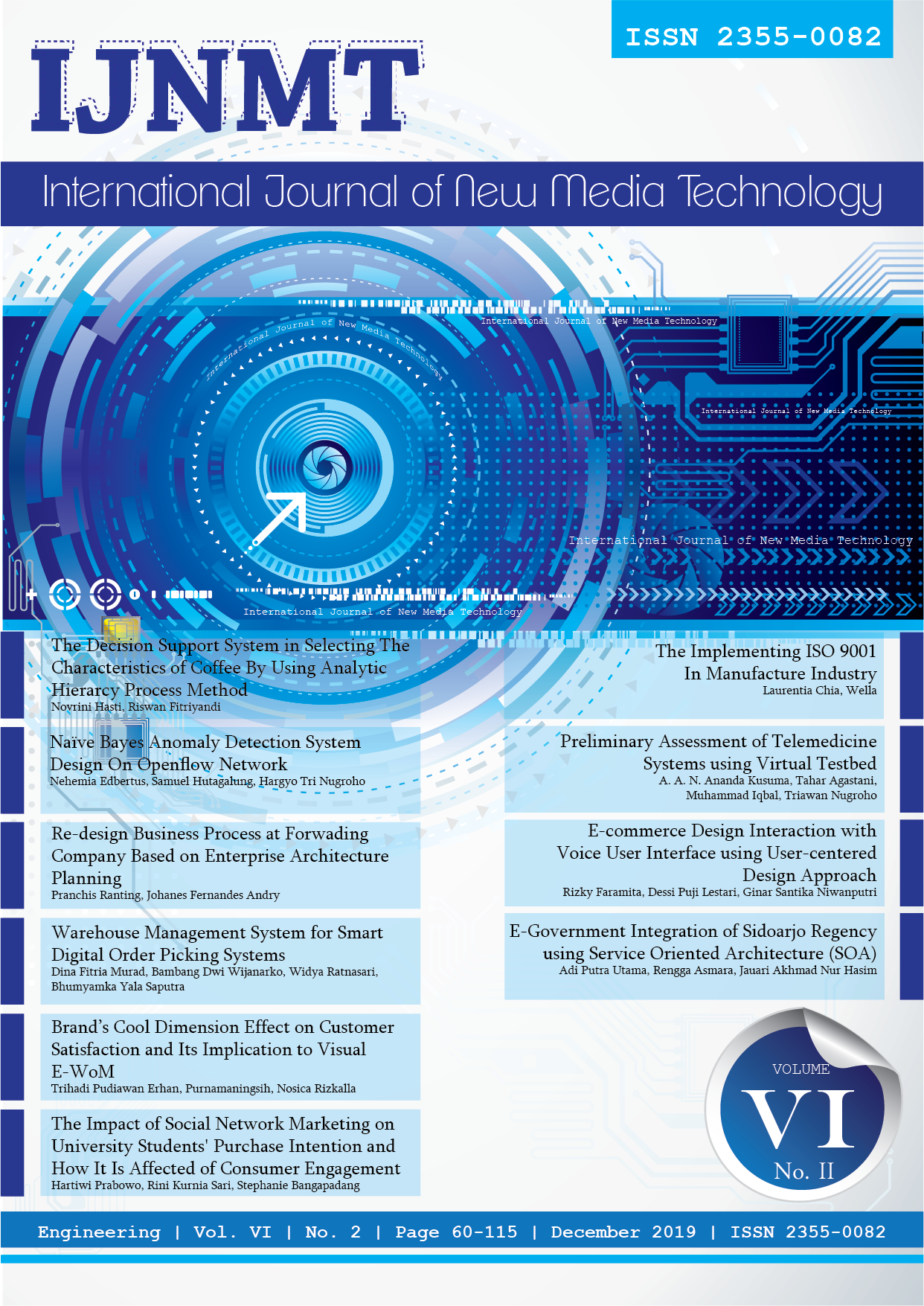Warehouse Management System for Smart Digital Order Picking Systems
DOI:
https://doi.org/10.31937/ijnmt.v6i2.1215Abstract
The purpose of this paper is to identify problems in the identified picking process that lead to consumer dissatisfaction and provide solutions to problems that exist in the company, especially in warehousing, supported by analysis of the running system to obtain the information needed. The decision-making system is used to be able to produce information regarding picking orders in adjusting the number of orders, availability of pickers and distribution to consumers. The research method that uses the PIECES analysis and technology acceptance model method to determine the user's acceptance of the system being built. The smart digital order picking system was able to significantly accelerate the order picking business process from the ones that previously took a long time after implementation could meet consumer needs quickly.
Downloads
Downloads
Published
How to Cite
Issue
Section
License
Authors retain copyright and grant the journal right of first publication with the work simultaneously licensed under a Creative Commons Attribution-ShareAlike International License (CC-BY-SA 4.0) that allows others to share the work with an acknowledgement of the work's authorship and initial publication in this journal.
Authors are able to enter into separate, additional contractual arrangements for the non-exclusive distribution of the journal's published version of the work (e.g., post it to an institutional repository or publish it in a book), with an acknowledgement of its initial publication in this journal.
Copyright without Restrictions
The journal allows the author(s) to hold the copyright without restrictions and will retain publishing rights without restrictions.
The submitted papers are assumed to contain no proprietary material unprotected by patent or patent application; responsibility for technical content and for protection of proprietary material rests solely with the author(s) and their organizations and is not the responsibility of the IJNMT or its Editorial Staff. The main (first/corresponding) author is responsible for ensuring that the article has been seen and approved by all the other authors. It is the responsibility of the author to obtain all necessary copyright release permissions for the use of any copyrighted materials in the manuscript prior to the submission.















